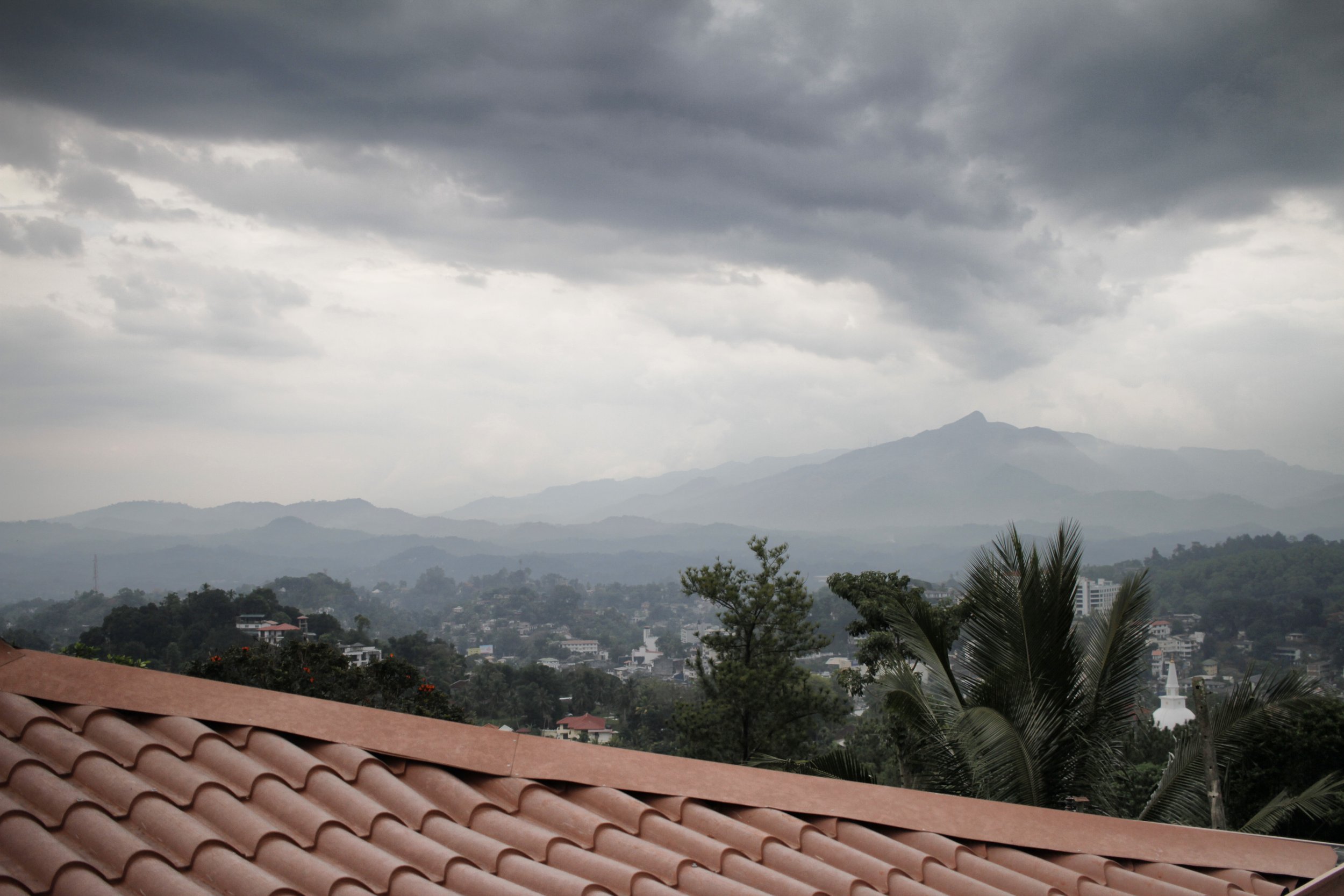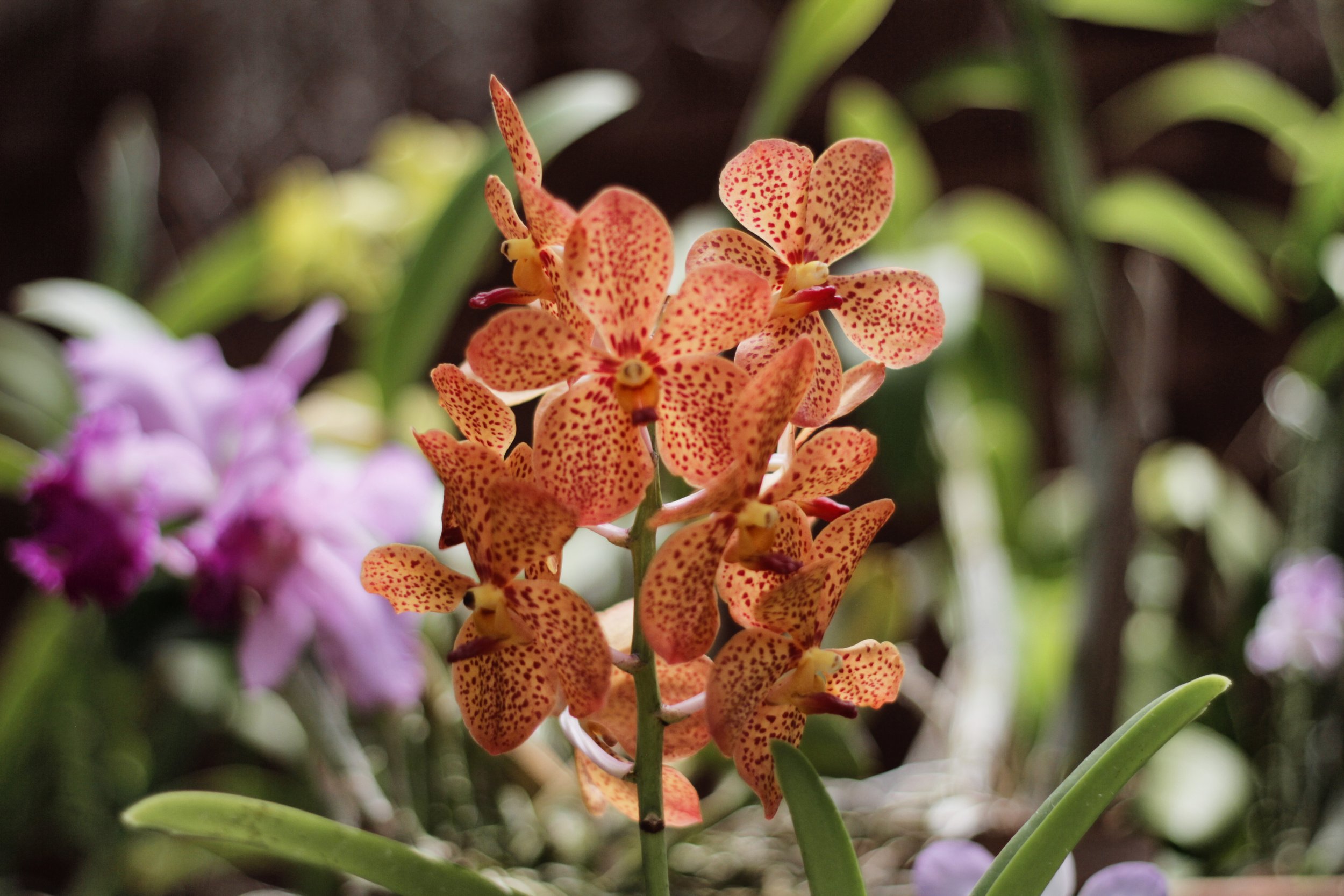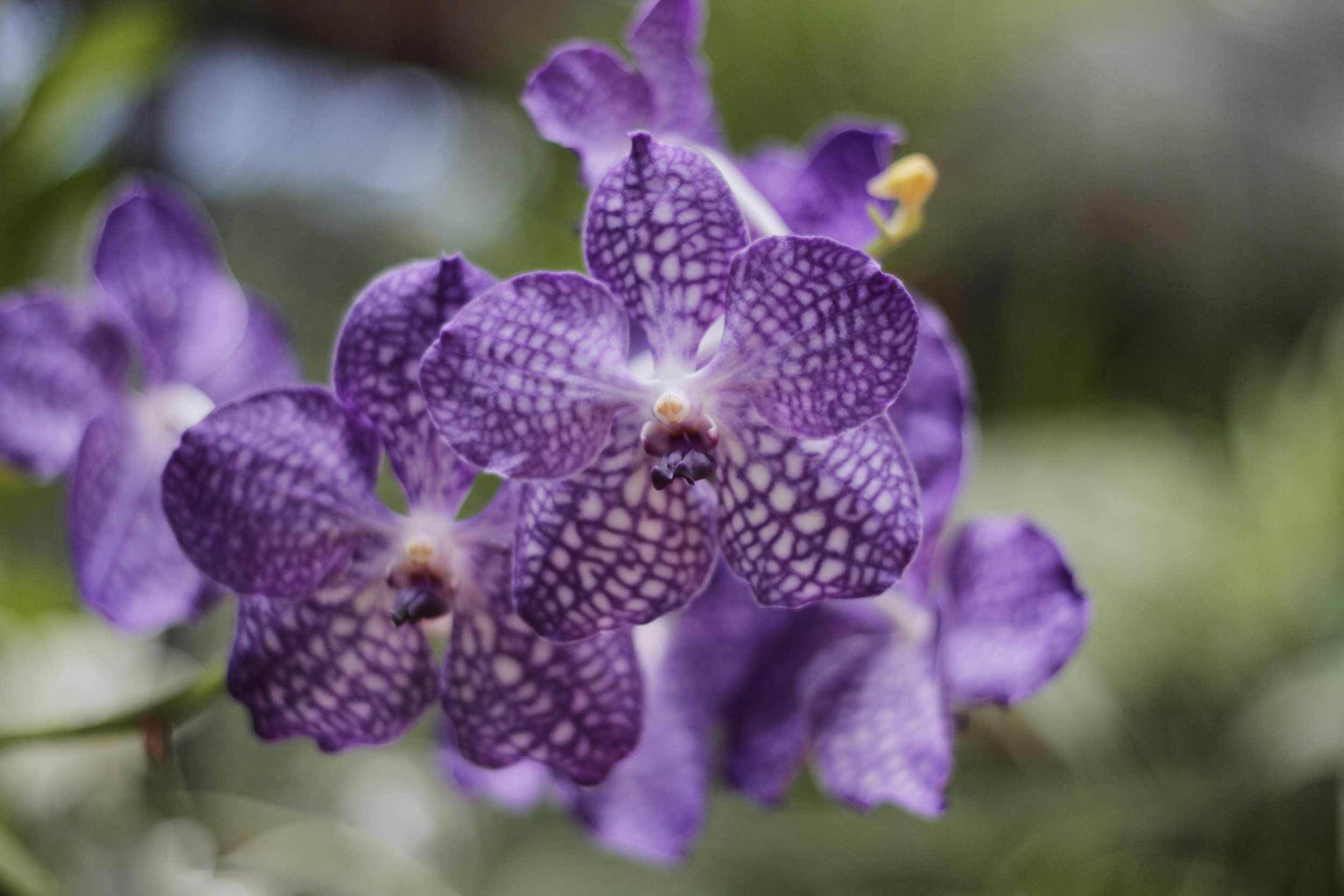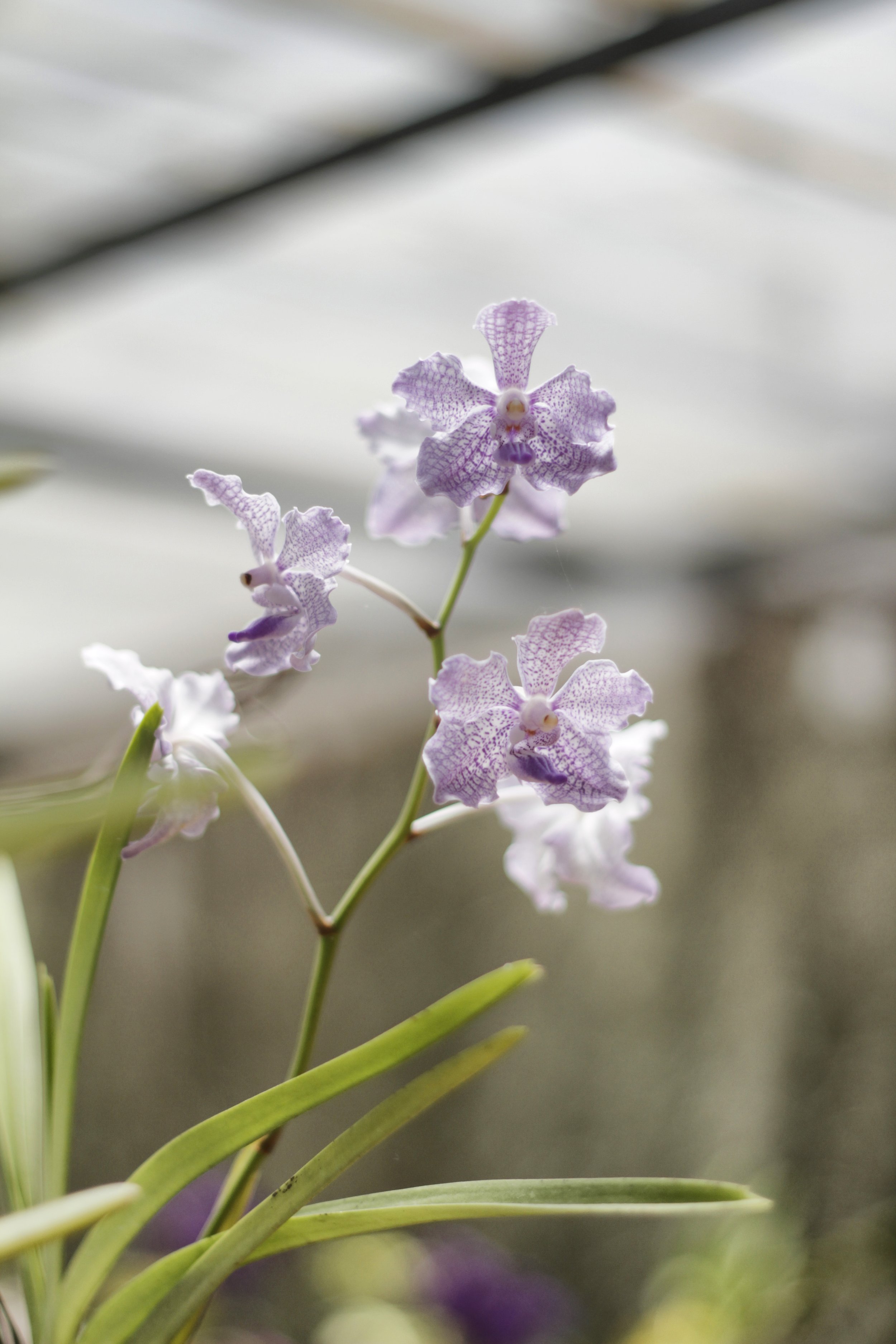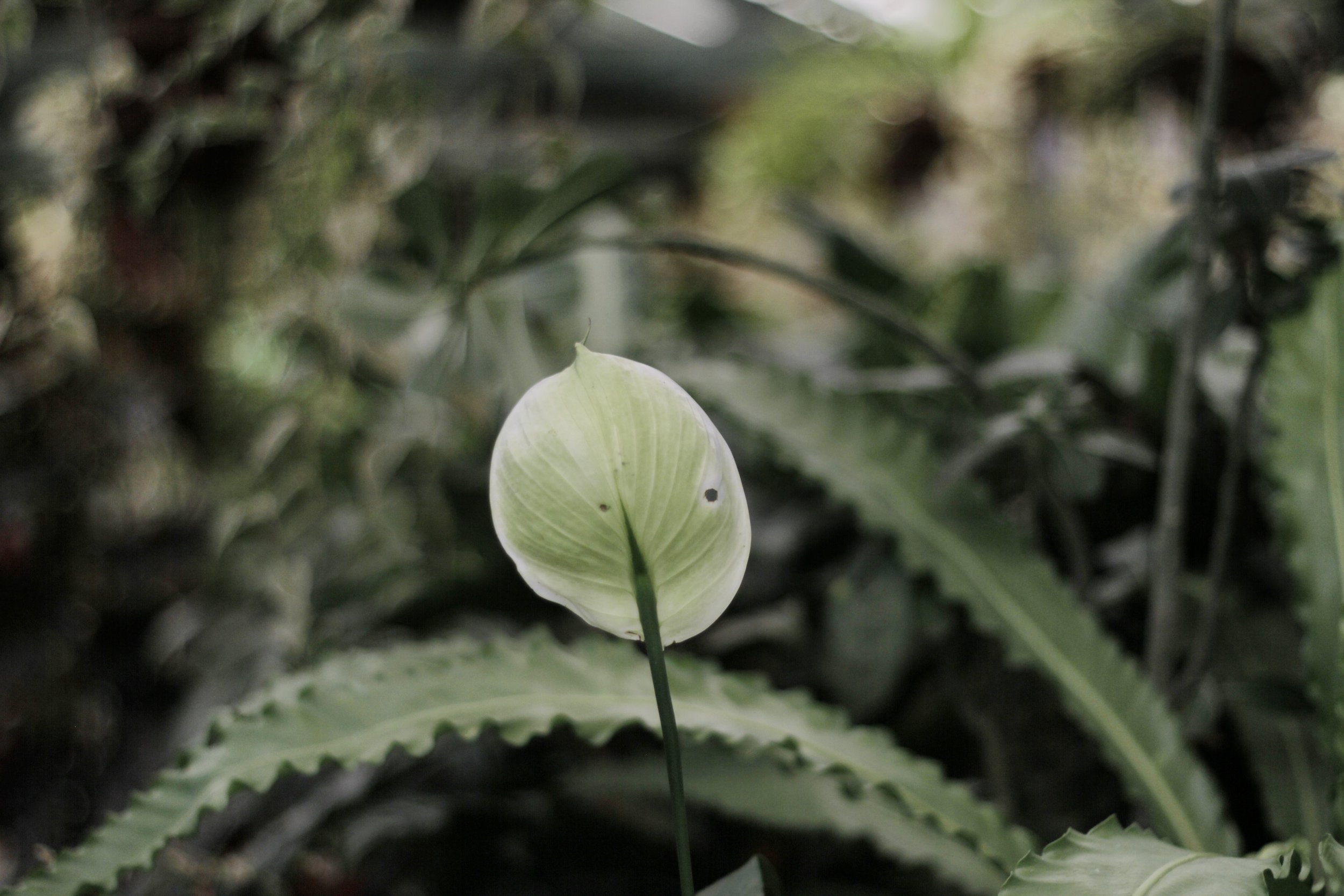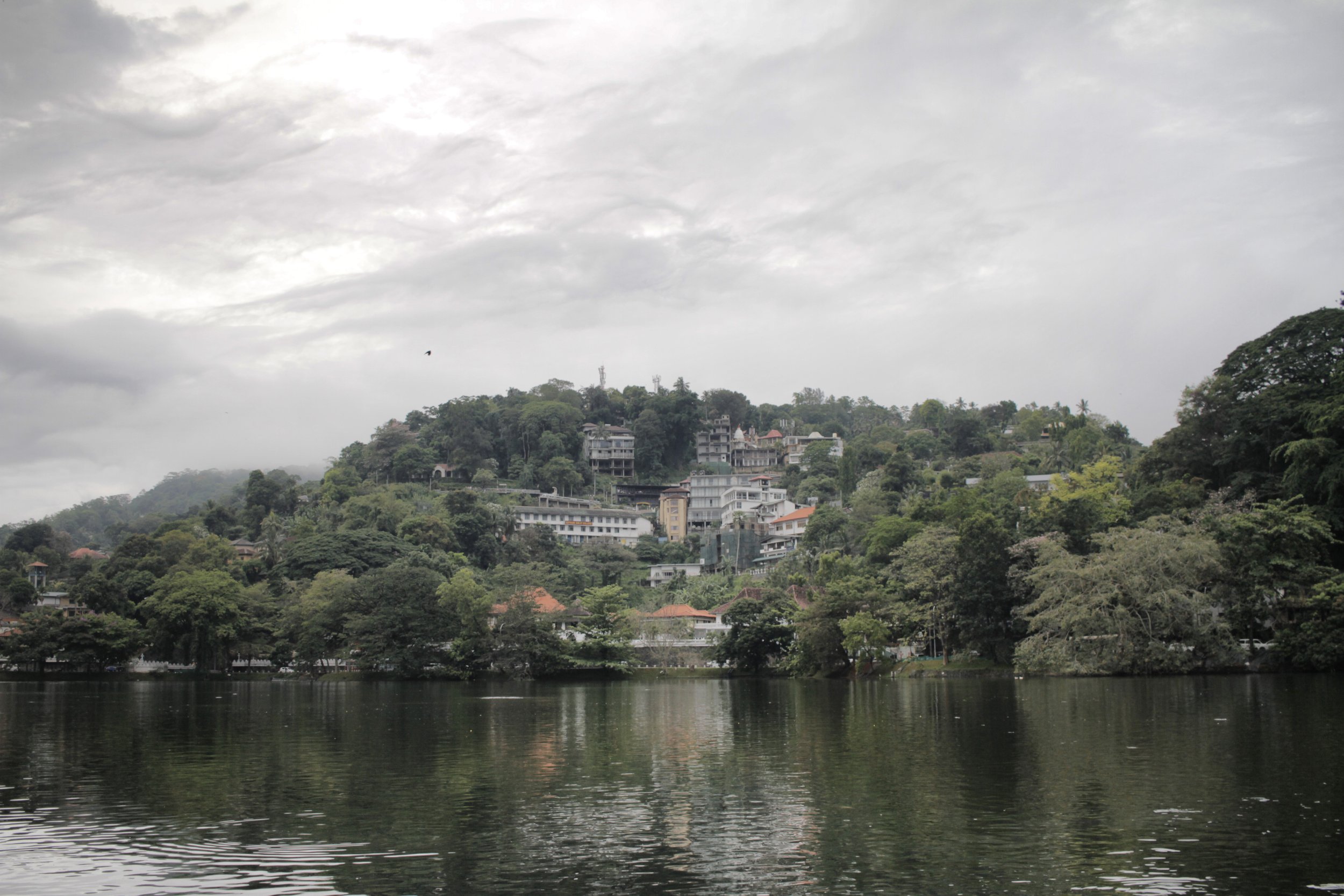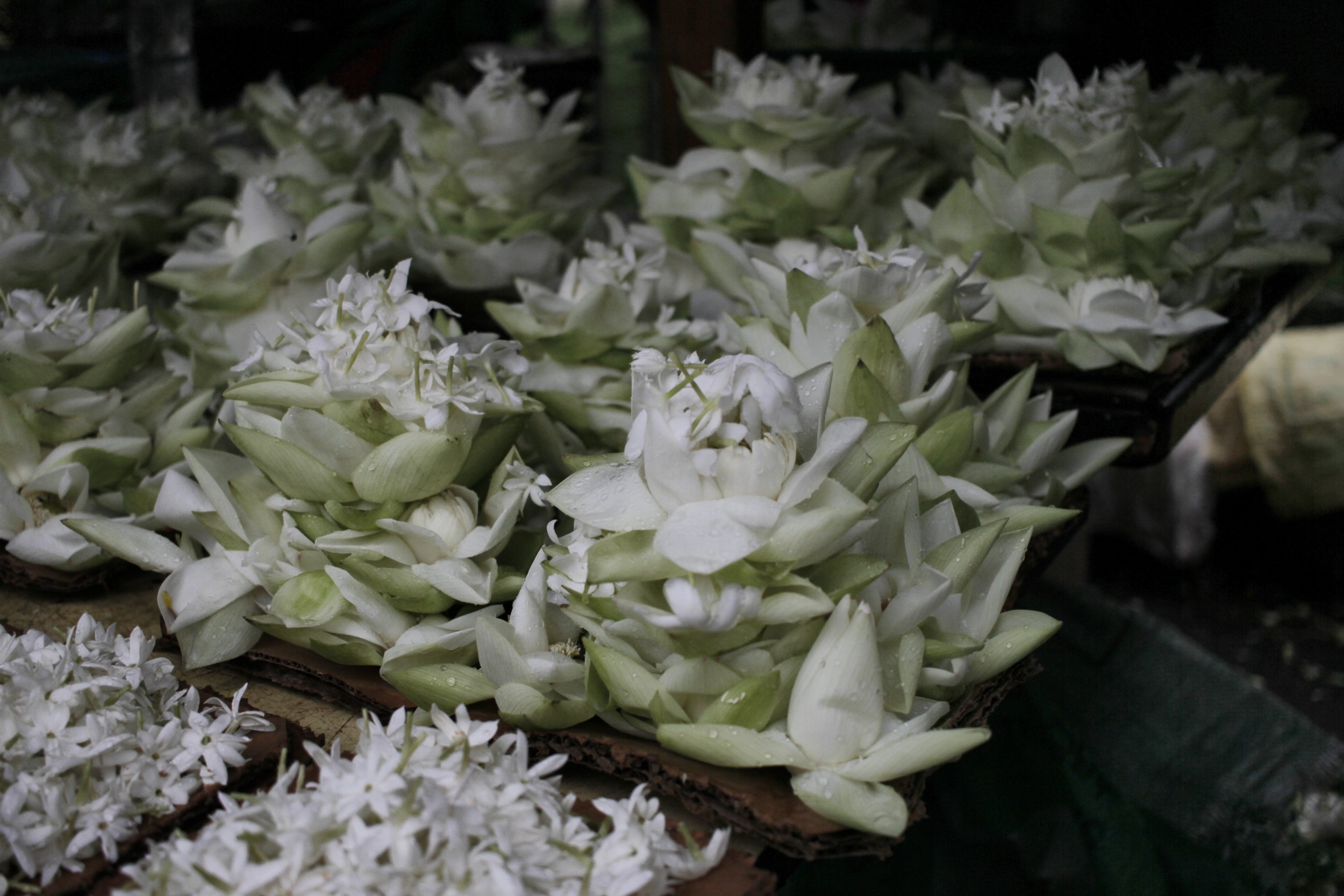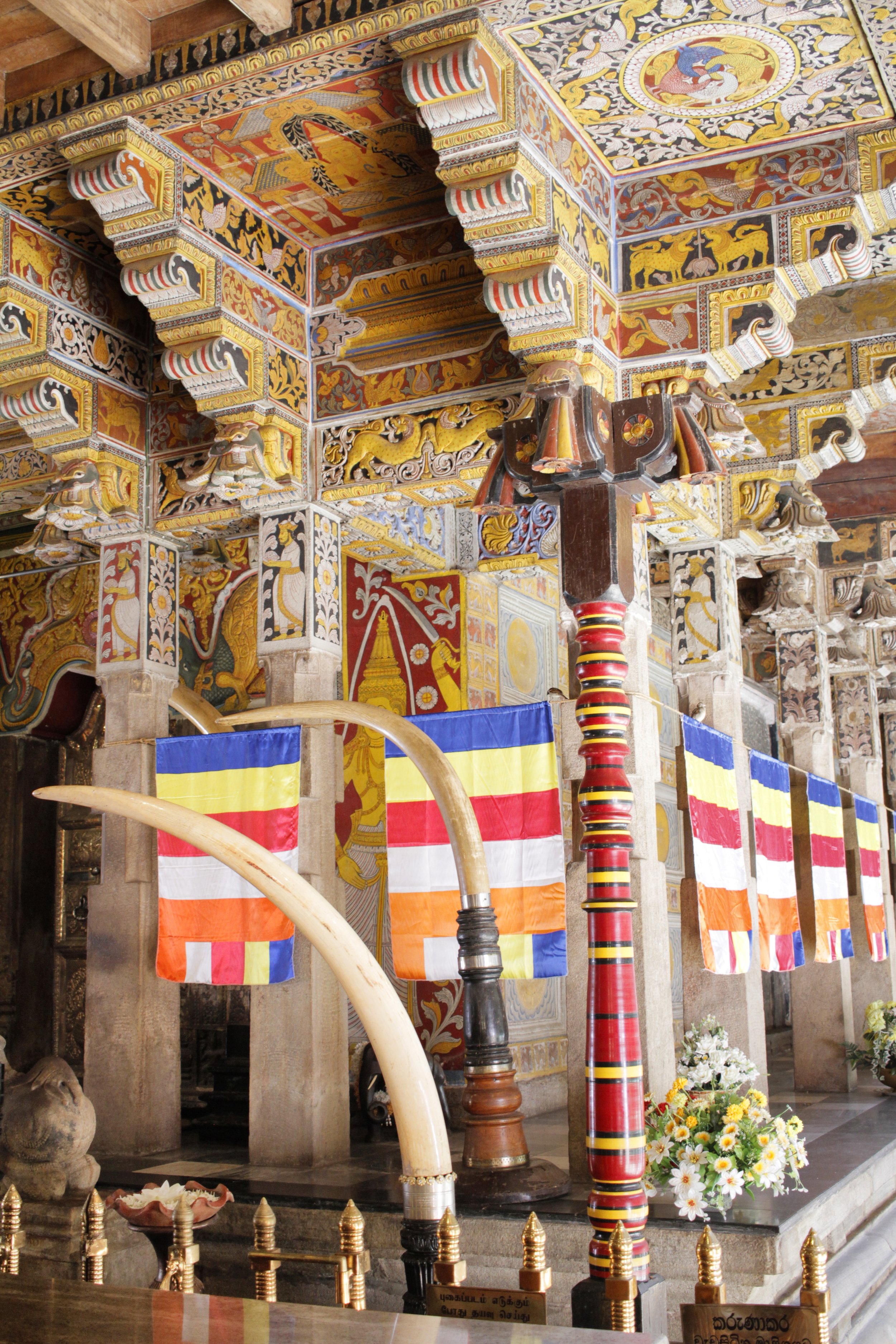Kandy’s Giant Buddha, Botanical Gardens & Fire Dancing
Best things to do in Kandy: let sacred Buddhist sites & beautiful gardens inspire you with this travel guide.
Sri Lanka as we know it, formerly called Ceylon and officially the Democratic Socialist Republic of Sri Lanka, is an island country in the Indian Ocean in South Asia.
It’s a country known for diversity, offering all things travelers love including high temperatures, flavorful cuisine, stunning landscapes, friendly people, rich culture and history and best of all, it's pretty affordable.
Kandy, located in the center of Sri Lanka, is a lively city set on a plateau surrounded by mountains home to tea plantations and a biodiverse rainforest.
Historically, Kandy was the last capital of the ancient kings’ era and is a major administrative and religious city in the Central Province. It’s home to the Temple of the Tooth Relic, one of the most sacred places of worship in the Buddhist world, being declared a UNESCO World Heritage Site in 1988.
Our three-week journey traveling through Sri Lanka began by heading north of its capital city, Colombo, and circling the country clockwise. First up, was an intimate experience elephant watching in Pinnawala.
Then it was on to climb the eighth Wonder of the World (so they say) in Sigiriya, explore the ancient city of Polonnaruwa and join a truly unique elephant safari at Minneriya National Park.
Following, it was on to Kandy to honor its sacred Buddhist sites, scenic Kandy Lake, Royal Botanical Gardens and traditional Kandyan fire dances, along with Nuwara Eliya, also known as the “City of Light,” and Ella, for its epic waterfalls, train rides and jungle mountains.
Lastly, we stopped in Tissamaharama to visit Yala National Park and then the sunny seaside town of Mirissa for the nearby iconic old city of Galle, whale watching and gorgeous beaches.
Best Things to Do in Kandy
Witness / Bahirawakanda Vihara Buddha Statue
Get Lost / At the Royal Botanical Gardens
Enjoy / An authentic Kandyan fire dance
Get Inspired / At the Temple of the Tooth
Best Things to Do in Kandy
Witness Bahirawakanda Vihara Buddha Statue
From Sigiriya, the ride to Kandy was about three hours and cost 7,500 rupees ($100 USD) by taxi. Our stay in Kandy, Sevana City Hotel was super cute, offering a cold glass of iced tea upon arrival. It also had a beautiful courtyard at its center with a restaurant and small pool on the top floor.
The first stop in Kandy was of course, the Bahirawakanda Vihara Buddha Statue, overlooking the entire city. As the story goes, the temple was built on land donated to a monk by the Minister of Lands. This monk spent years soliciting funds and advocating for it to be built which was opposed by many senior monks thinking it would overshadow the city. Eventually in the late 1980s it began construction and was open to the public by January 1993.
From the city center, the walk up took about 30 minutes and was fairly steep near the top. It was also incredibly hot and muggy without much around refreshment-wise so I’d recommend bringing some water and snacks along for the walk.
My first impressions of the statue were that of grandeur and impressiveness. I couldn’t believe the sheer scale and it felt a bit like he might tip right over onto his guests below. Buddha himself can be seen from almost anywhere in the city, standing 88 feet high, and is one of the tallest Buddha statues in Sri Lanka.
Buddha sits in the position of the Dhyana Mudra, the posture of meditation associated with his first Enlightenment. And despite being dusty from the city below, the creamy white Buddha was gorgeous, peaceful even, especially set against the grey cloudy sky.
At the base of Buddha, we were provided with a wrap for modesty and a place to remove our shoes, typical of most Buddhist temples. The entrance was free but we did tip the man helping place the shoes.
Sri Maha Bodhi Viharaya, the Buddhist temple housing the giant white Buddha sits at the hilltop with an alter for offerings. There’s also an option to climb a bit higher in the main structure for even more incredible views of the surrounding landscape.
These views of the surrounding city were truly the best part of visiting the site. It was also pretty amazing in the following days being able to see the giant white Buddha from all over the city as a great reference point.
At the time, the temple site was under construction but all things considered, definitely worth a visit. I also read that there’s a souvenir shop located at the top but I don’t remember seeing one open.
And with that, one last look at the giant Buddha as it began to sprinkle and we made our descent back down the hill.
Even though the weather was gloomy, there were a few more stops before the day was over. A quick bite to eat and then on to the Kandy Municipal Central Market, selling all kinds of goods ranging from clothing to spices to creams and supplements. This market was definitely the spot to pick up any items you’re looking for as they are much cheaper than many other shops.
Get Lost at the Royal Botanical Gardens
In the morning, our hotel offered a delicious hot breakfast on the rooftop for about $5 USD. Some of my favorite offering were the variety of fruit including passion fruit, papaya and pineapple. After dining, it was time to explore the city some more.
The Royal Botanical Gardens are located in Peradeniya, a suburb of Kandy, just over three miles west of the city center. They lie near the Mahaweli River, the longest river in Sri Lanka, and hold more than 4,000 species of plants including spices, palm trees, medicinal plants and orchids. With 147 acres to explore, nearly 1.5 million visitors stop by each year, one-third being tourists. And lucky for me, the gardens are renowned for their collection of orchids, my favorite plant.
Our tuk tuk driver (the best way to get around Kandy), hired for the day at 2,000 RUP ($25 USD), suggested entering through the rear of the park to avoid the crowds which turned out to be a great idea because there’s also a really fun suspension bridge leading into the park.
Upon entering, the first destination was the orchid garden. Along the way were flowering plants of all kinds and a beautiful path lined with palms. Orchids are flowering plants with blooms that are often colorful and fragrant. The orchid family has about 28,000 accepted species which is equal to the number of boney fish, more than twice the number of bird species and nearly four times the amount of mammal species.
The orchid garden was absolutely one of the best I’ve ever seen, only comparing to the amazing but much smaller orchard garden I found in the hills of Monteverde, Costa Rica at the Jardín de Orquídeas Monteverde where they house 450 species in one little garden with some of the tiniest orchids in the world, needing a magnifying glass to see the detail of some. There was even one species that smelled like chocolate.
The orchids were countless; Kandy district itself is home to 110 orchid species and even though there wasn’t a wide variety of orchids, I’ve never seen so many in bloom all at once. The greenhouse was filled with every color orchid imaginable. A dream come true for an orchid lover like myself.
The lighting was perfect inside the greenhouse making it easy to see the detail of each orchid.
Circling round and round the greenhouse taking photo after photo, I couldn’t get enough, viewing each one from every angle.
Also, it was a great idea to visit the orchid house first thing in the morning, before the heat of the day and huge crowds overtook the space.
This delicate white orchid was my favorite, never having seen one this shape. The blooms reminded me of tiny white tea cups.
After filling up on orchids, there was still so much more to see. The cactus house, palm street, bamboo and much more covered the grounds of the park with paths forming a large loop around the gardens.
The cactus house was small in size and dimly lit but still worth a stroll.
There were even trees full of gigantic jackfruits. Jackfruit is a species of tree in the fig, mulberry and breadfruit family and is known for its stinky meaty flesh. In Sri Lanka, it’s primarily used in traditional curry recipes.
Amazingly, the bamboo was some of the largest I’ve ever seen, almost as wide as my waist.
And there were the most amazing trees with massive roots crawling above the ground. These unusual trees, called Banyan trees have long aerial roots that grow down from the branches into the ground, spreading great distances and living for centuries.
Three hours in the gardens was more than enough to tire out. The tuk tuk driver waited patiently outside and suggested a stop at a spice garden. These spice gardens are very famous in Sri Lanka and I’m sure you won’t miss the opportunity to tour one, just be careful not to spend tons of money on herbs and tinctures which can be found for a tenth the price in the Central Market (like I sadly did). From my understanding, drivers earn commission when they bring tourists who purchase products ranging from general spices to creams for everything imaginable like hair removal, puffy eyes, dry skin and so on.
After getting caught in a torrential downpour our driver took us to a local spot called Balaji Dosai, a vegetarian restaurant serving dosa, a savory rice and lentil crepe. The food was very delicious and as intended, devoured with my hands.
Enjoy an Authentic Kandyan Fire Dance
In the evening, a stroll toward the city’s scenic heart, Kandy Lake. Unaware of what was going on or where we’d end up, we followed the crowds who all seemed to be walking in the same direction, while enjoying the gorgeous views of the waterfront.
It must have been a celebration of some kind honoring the Sacred Tooth Relic but either way we ended up at the Kandyan Art Association, a government sponsored venue along Kandy Lake (Bogambara Lake). There would be a traditional Sri Lankan fire dance. Unfortunately, the dance was held indoors but magical nonetheless. And sadly, the lighting was quite dim, so I missed any great photos.
As we arrived, the cost of tickets was 1,000 RUP ($13 USD) each and we were offered seats super close to the stage. The show began promptly at 6 p.m.
All in all, there were 11 different performances, each with its own character and meaning, with fire dancing as the finale:
Magulbera (Ceremonial Drums)
To begin, blowing of the conch shell, tradition at the beginning of any ceremony. Drums (bera) are also an integral part of the ritual; an ancient custom to present ritual music when seeking blessings of the Guardian Deities of the land.
Puja Natuma
Girls carry oil lamps making an offering (puja) with their dancing skills to the Guardian Deities.
Naga Gurulu
Traditional dance with cobra mask.
Raban
A traditional folk dance using the Raban, an instrument similar to the drum. The popular Ath Rabana or Hand Rabana is almost one foot in diameter and is played in a variety of ways by the dancers. Raban playing is also accompanied by singing.
Mayuranatuma (Peacock Dance)
In this dance, women depict graceful movements of the peacock which according to mythology is the bird that transports Skanda, the War God of Ceylon, and is worshiped by Buddhists and Hindus alike.
Panatheru Natuma
The name of this dance is taken from the instrument used, the panatheru, which resembles the tambourine. Drums also add to the rhythm of this performance. The dance itself depicts Sinhala warriors on their way to battle.
Salupaliya
Kulunatuma (Harvest Dance)
A traditional folk dance performed by village damsels to celebrate a rich harvest. The dance demonstrates tasks from reaping to winnowing of the grain. It’s a buoyant dance displaying grace, accompanied by light drum beats and the haunting strains of the flute.
Ginisisla (Fire Dance)
A south Ceylon fire dance showing the power of charms over fire including fire-eating. It also includes twenty-seven devils that can trouble mankind. The absolute faith of the fire dancers protect them from flames.
Ves Natuma
This dance is the most important in the Kandyan dance form. Ves is the traditional attire of the Kandyan dancer. Sixty-four ornaments complete the dress and traditionally their sheen symbolizes the rays of the sun. It takes years of rigorous training before a dancer can achieve status of a fully fledged Ves dancer.
Drum Orchestra
The orchestra has five categories of traditional instruments, which are usually played three times a day in places of worship as a tribute to Lord Buddha or to honor royalty. The various beats of the drums blend together in a perfect unison and harmony.
Fire Walking
The origin of fire walking can be traced back to the epic story of Rama and Sita Ravana, the King of Ceylon, when princess Sita was abducted from India. When Rama her husband got her back, she had to prove her chastity from her forced stay with Ravana by walking on fire barefoot - unhurt. Today, the devotees who perform fire walking seek the divine blessing of Lord Kataragama and Goddess Pattini before they do so.
The best part was at the end during the fire walking when the performers invited the crowd up onto the stage for a closer view. It was pretty intense to say the least. What an incredible show, one that won’t be forgotten anytime soon.
On the walk back, some chocolatey drinks and a bite to eat; curry with coconut rice, helped to warm us up in the soggy weather.
Get Inspired at the Temple of the Tooth
Fresh fruit juice, coffee, fruit, scrambled egg whites, toast and hash browns were served for breakfast on the rooftop of our stay. Then it was time to rush over to the Temple of the Tooth for the morning ceremony.
Rituals at the Temple of the Tooth are performed three times daily: at dawn, noon and in the evenings. On Wednesdays, there’s a symbolic bathing of the Sacred Relic with an herbal preparation made from scented water and fragrant flowers, called Nanumura Mangallaya.
The importance of the Temple of the Tooth is great. Built in 1595 during the reign of King Vimaladarmasuriya I, the temple houses the sacred tooth relic of Lord Buddha and is revered by devotees of the Buddhist faith from all corners of the world.
According to Sri Lankan legends when the Buddha passed away in 543 BC, his body was cremated in a heap of sandalwood in Kushinagar, India. His left canine tooth was pulled from the ashes by his disciple and passed on to the King. It’s now thought of as a royal possession and believed that whomever possesses the tooth relic has a divine right to rule the land.
Initially, the Temple of the Tooth was quite confusing to enter. There were so many people and so many different lines to stand in. One of those hurry up and wait moments. At first, we waited in line as they checked our clothing to enter a secure area. Then another line and into another secure area to check in our shoes. Another line until we realized tickets were in a different area. Jumping out of line, tickets were sold either at a booth or from a machine for 1,500 RUP each ($20 USD).
Tip / Arrive early and expect to wait in long lines. Also make sure to have a ticket in hand before entering. Tickets are sold up at the front on the righthand side in booths or machines (which are faster). And I’d suggest learning a bit about the space and location of special relics before your visit. Once inside, it can be tough to understand what you’re looking at at times.
The main entrance gate lies over a moat called Mahawahalkada. At the foot of the Mahawahalkada steps, there’s a Sandakada pahana (moonstone) carved in Kandyan architectural style. Mahawahalkada was totally destroyed in a 1998 bomb blast and rebuilt afterwards along with Sandakada pahana. At this point, everyone funneled over the moat and into the temple through a small corridor. People began pushing their way inside. It was so hot and frustrating but cleared a bit once inside.
The Hewisi drummers' chamber is placed in front of the main shrine. The two story’s of the main shrine are known as Palle malaya (lower floor) and Udu malaya (upper floor) or Weda hitina maligawa. The doors of the Weda Hitana Maligawa are ivory carvings and the actual chamber in which the tooth relic is kept is known as the Handun kunama. The tooth relic is encased in seven golden caskets engraved with precious gemstones.
Immediately after entering the chamber, drums began pounding to a beautiful rhythm and music echoed through the space. People continued to line up and push their way upstairs to see the Relic of the Tooth but it was more than I could bear so we jumped out of line to explore other areas with less of a crowd.
Tip / Explore the temple out of order if you want to avoid the hectic lines.
I’ll admit, inside the temple was quite beautiful. All surfaces were adorned with gold and hand painted with intricate designs, especially the ceilings which I believe are carved of wood. Colorful Buddhist prayer flags hung from the wooden beams, lining the corridors with bright colors.
We learned the grounds are also home to a few museums including the National Museum of Kandy which holds over 5,000 artifacts consisting of weapons, jewelry, tools and other artifacts from the Kandian Era, a time between the 17th and 19th centuries.
The center courtyard was especially nice to get some fresh air and sunlight.
Near the back of the courtyard, many visitors were lighting candles for prayers.
Looping back around we were finally able to get our eyes on the tooth relic, or at least where it’s held. The tooth, housed in a dedicated temple inside the royal palace complex where worshipers and tourists alike can visit, is held inside a golden casket covered in precious stones. And although you can’t actually see the tooth, this is where thousands of pilgrims visit daily just to get their eyes on the sacred inner shrine and make offerings and prayers with lotus blossoms.
All in all, the whole experience was a bit overwhelming due to the confusion, busy crowds and steamy hot weather but definitely worth it. I’m just glad I don’t ever have to do it again.
After a hectic morning, we had worked up quite an appetite so it was off to Secret Alley Cafe. The cafe was adorable and packed full of people. Once ready, we placed our orders at the counter and waited for them to deliver to the table. Unfortunately, there was a mix up with the service and they didn’t have some of the items listed on the menu but the avocado salad and iced coffee with cinnamon were both really tasty. The cafe also sold a handful of cute souvenirs so I picked up some coasters with drawings of local fruit like coconut, mango and guava.
Kandy ended up being an unexpected pleasant surprise. Typically, I avoid busy cities at all costs but this one offered so much in the way of culture, nature and diversity. One things for sure though, double check the weather before you arrive as we were often caught in heavy rain storms which was a bit difficult to navigate. Up next, Nuwara Eliya, a city in the tea country hills of central Sri Lanka two hours south of Kandy.










